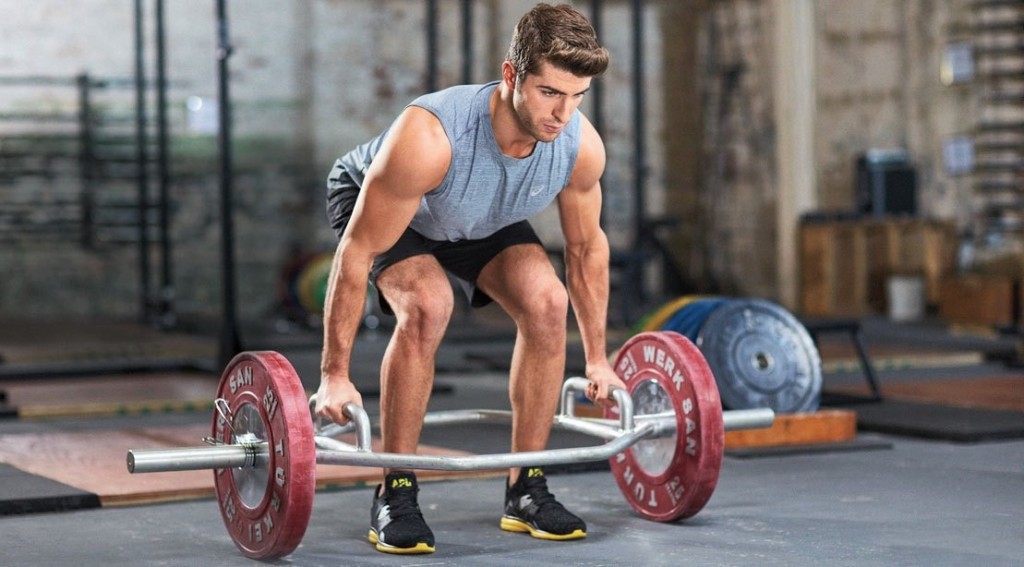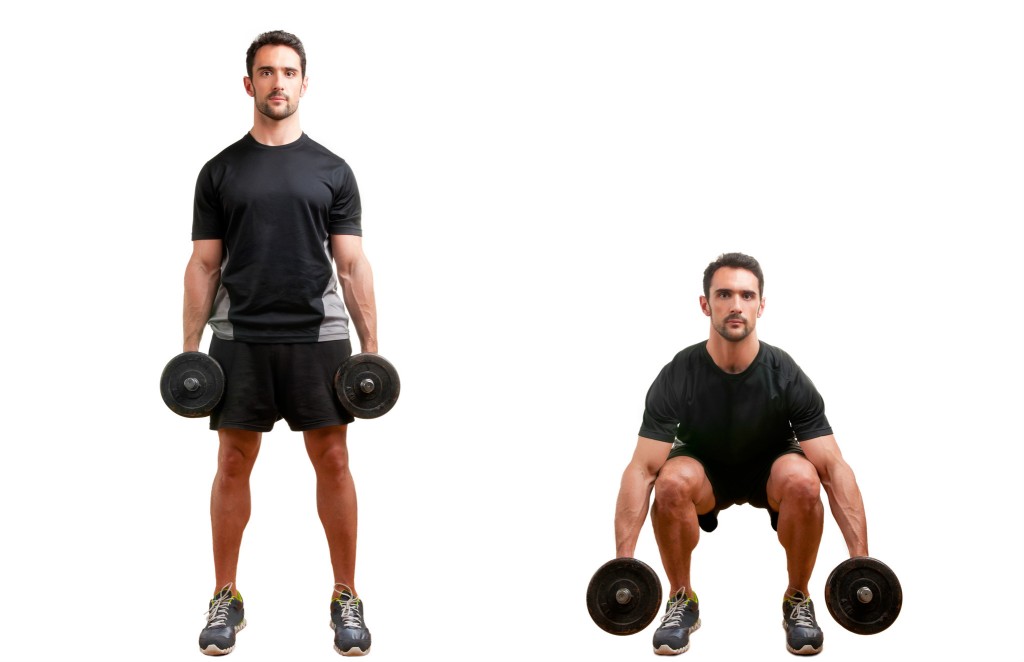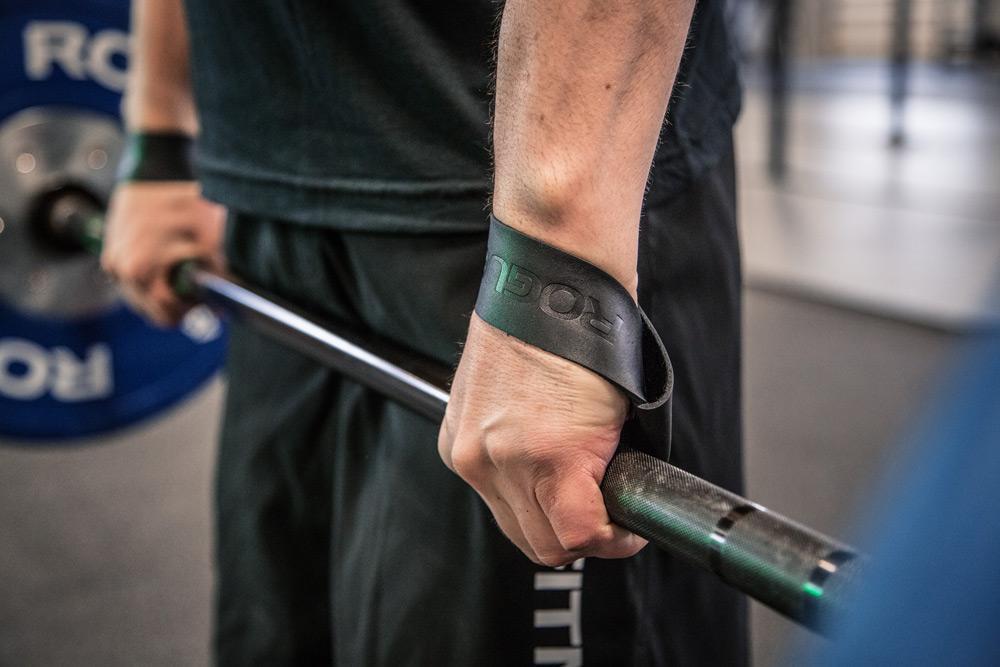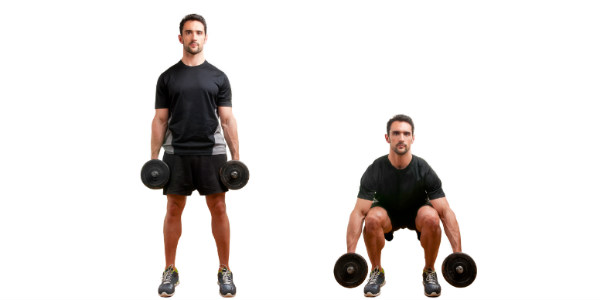With only dumbbells, can you get a good deadlift workout in, or does it require a barbell?
The deadlift is a classic compound exercise that is one of most important lifts you can do in the gym for overall strength and muscle growth. It works your back, lats, hamstrings, quads, traps, and other stabilizer muscles. With the deadlift and just a couple other exercises you can hit every muscle in your body.
The basic answer is: Dumbbell deadlifts are worth doing. Let’s explore the unique challenges with them.
Table of Contents
The Difference in Form with Dumbbell Deadlifts
Dumbbell deadlifts are a bit like hex bar deadlifts as far as the form you use and the muscles it hits.

With straight bar deadlifts, you have to grip the bar in front of you, forcing you to bend at the hips more and use your hamstrings to pull the weight up in front of your legs. As the weight gets heavier, good form becomes extremely important to avoid a back injury, usually due to rounding your lower back as your hips can’t keep up with the load.
With hex bar deadlifts, you get to grip the handles on either side of your body instead of in front of you, giving you a mechanical advantage in bringing the weight up and making it easier for you to keep decent form and not hurt yourself. You also use a neutral grip (palms facing each other) instead of a pronated grip that a straight bar requires.
This causes your torso to be a bit more upright, and the weight to be balanced in the same vertical line as your body, making the movement more like a squat than a deadlift.
Dumbbell deadlifts can be done either way: with the dumbbells held in front of you with the handles in line with each other as if they were a barbell, or at your sides.

When you hold them at your sides, it’s more of a dumbbell squat, as far as the way that a barbell squat traditionally hits your quads more a deadlift does. Either way, it’s a good exercise as long as you keep good form with a tight lower back.
Your Body Dimensions Matter
For the dumbbell deadlift, you may have to work your shoulders somewhat to keep the dumbbells away from your legs. This is mainly what makes the movement awkward as you increase the weight to a difficult level. At some point you might not be able to stop from hitting your legs because your shoulders just aren’t strong enough.
Wide hips or narrow shoulders will make this problem more significant. Women with typical female skeletal proportions will therefore have more of an issue with it than men. Anyone with shoulders wider than typical in relation to their hip width will have an easier time at it.
Grip Strength
A few notable things to keep in mind with gripping the dumbbells as they get heavier…
Many dumbbells come with handle widths thicker than a typical barbell.
The thicker the handle gets, the harder it is for you to hold onto when it gets heavy. An olympic barbell will usually have a 28mm to 30mm thick shaft. Dumbbell handles usually go up in thickness for the heavier weights to help prevent them from getting bent if you drop them at a bad angle. It varies by model, but they may be as thin as 25mm on the 5lb size, all the way up to 32mm on 100lb and heavier.
(For reference, 25mm = 1 inch)
Troy’s pro-style dumbbells are one exception. They use 27mm handles all the way up to the heaviest size, 150lb.
Grip strength in this situation is a classic problem for lifters and has been addressed in a few ways:
- A mixed grip on a barbell when doing deadlifts. This means you grip overhand with one hand and underhand with the other, so that the bar won’t have a tendency to roll out of your hand in either direction. With dumbbells this of course does not help at all and isn’t really even possible. A mixed grip might even be a bad idea with a barbell.
- Chalking your hands. This will keep your hands from sliding. Your hands and forearm muscles can still give out, but at least the failure won’t be due to the bar getting too slippery from sweat or not having deep enough knurling to grab your palms well.
- Lifting straps are another good solution with dumbbell deadlifts. The straps create extra friction to give you a grip advantage, significantly increasing the amount of weight you can lift, usually to the point of neutralizing any lack of grip strength you have so that it becomes almost entirely a matter of whether your body can lift the weight.


